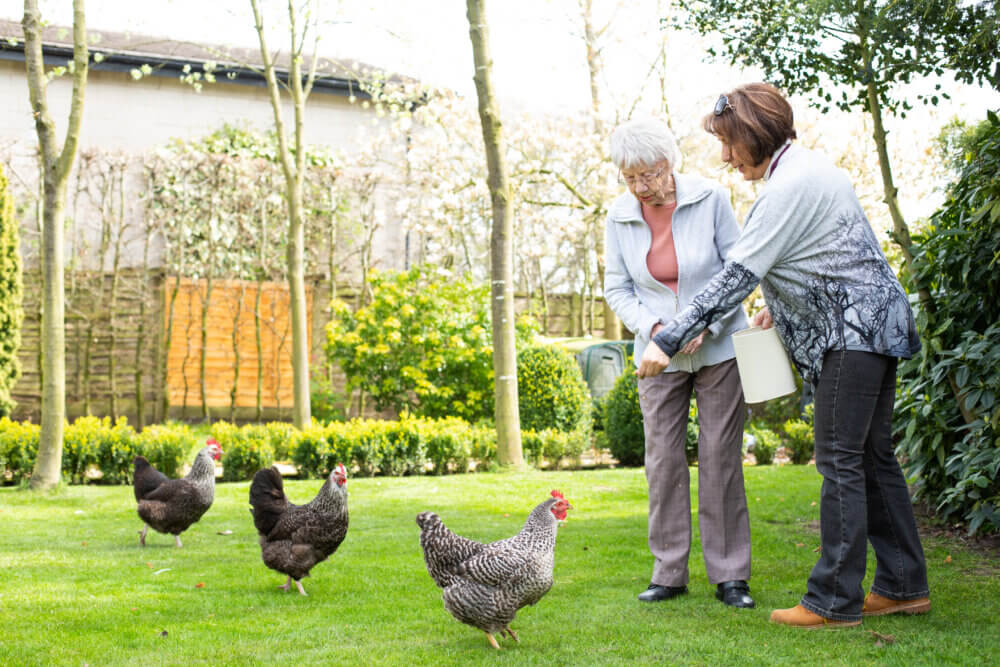How to Spot the Subtle Signs of Changing Wellbeing in an Older Loved One
By staying observant and compassionate, you can help your loved one maintain their independence, confidence, and quality of life.

October 1st was the International Day of Older People — an event celebrated around the world to raise awareness of both the opportunities and challenges faced by ageing populations. It’s a time to reflect on how our societies support older adults and to mobilise communities to address the difficulties they may face.
These challenges often arise from physical or psychological changes that accompany ageing. Life can look and feel very different for an older person compared to their younger years — and sometimes, those differences can quietly affect their wellbeing.
Recognising these changes early is key. Whether you’re a family member, friend, or caregiver, being able to spot the subtle signs of changing wellbeing can make all the difference in helping an older person stay healthy, independent, and connected.

Spotting the signs
1. Physical Signs
Changes in physical health are often the first and most noticeable. Pay attention to things like:
Mobility and balance: Are they moving more slowly, shuffling, or holding onto furniture more often?
Weight and appetite: Sudden weight loss or gain, or a lack of interest in food, can signal physical or emotional health issues.
Personal hygiene: A decline in grooming or wearing the same clothes repeatedly might indicate fatigue, low mood, or cognitive changes.
Sleep patterns: Sleeping too much, too little, or at unusual times can reflect changes in physical health or emotional wellbeing.
2. Emotional and Mental Health Signs
Wellbeing isn’t just about the body — it’s also about how we feel and think. Look out for:
Mood changes: Increased irritability, sadness, or loss of interest in activities they used to enjoy.
Confusion or forgetfulness: Occasional lapses are normal, but frequent disorientation or memory issues may need checking.
Anxiety or fearfulness: New worries about safety, health, or finances might signal distress or reduced confidence.
3. Social and Behavioural Signs
Social connections are vital for wellbeing, and changes in behaviour can be telling:
Withdrawal from social contact: Avoiding friends, skipping community activities, or not answering calls.
Changes in routine: Giving up hobbies or showing less interest in previously enjoyed activities.
Difficulty managing daily life: Unpaid bills, missed appointments, or neglected chores can indicate feeling overwhelmed or struggling cognitively.
4. Environmental Clues
Sometimes, the home environment tells a story too. Notice whether:
Tidiness has suffered: The home has become unusually cluttered or messy.
Lack of attention to detail: There’s spoiled food, unopened mail, or signs of neglect.
Assistive equipment not used properly or atall: like hearing aids, walkers, or glasses are being used correctly.

What can you do
Spotting the signs is just the first step. Here’s how to respond with care and empathy:
Start with a gentle conversation: Express concern without judgment. Sometimes, simply being heard makes a huge difference.
Encourage a check-up: A visit to the doctor can rule out medical issues like infections, medication side effects, or nutritional deficiencies.
Offer practical help: Small acts — like sharing meals, helping with errands, or arranging transport — can ease stress and build trust.
Connect with support services: Community programs, aged care services, and social groups can offer valuable help and companionship.
To make this process easier, Home Instead has developed a helpful “Spot the Signs Checklist” for family members. It’s designed to help you take a step back, reflect on what you’re seeing, and gain better insight into your loved one’s health and wellbeing. Using the checklist can be a simple but powerful way to notice patterns, start conversations, and decide when to seek further support. You can download a copy here.

Support at Home from Home Instead
At Home Instead, we provide support at home for older people in the towns of Banbury, Bicester, Brackley, Towcester and the villages in between. Our goal is to offer quality, relationship-based support that genuinely improves the lives of our clients.
If you feel that your family member might need that extra bit of help, please don’t hesitate to contact us to see how we might assist. The idea of “care” can sometimes feel off-putting — but for us, it’s not about that. It’s about forming comfortable, trusting relationships between our Care Professionals and the people they support, so we’re best placed to make a real, positive difference in the lives of both clients and their families. Feel free to call us for a chat on 01295 237237 or use our contact us form on the website here.
